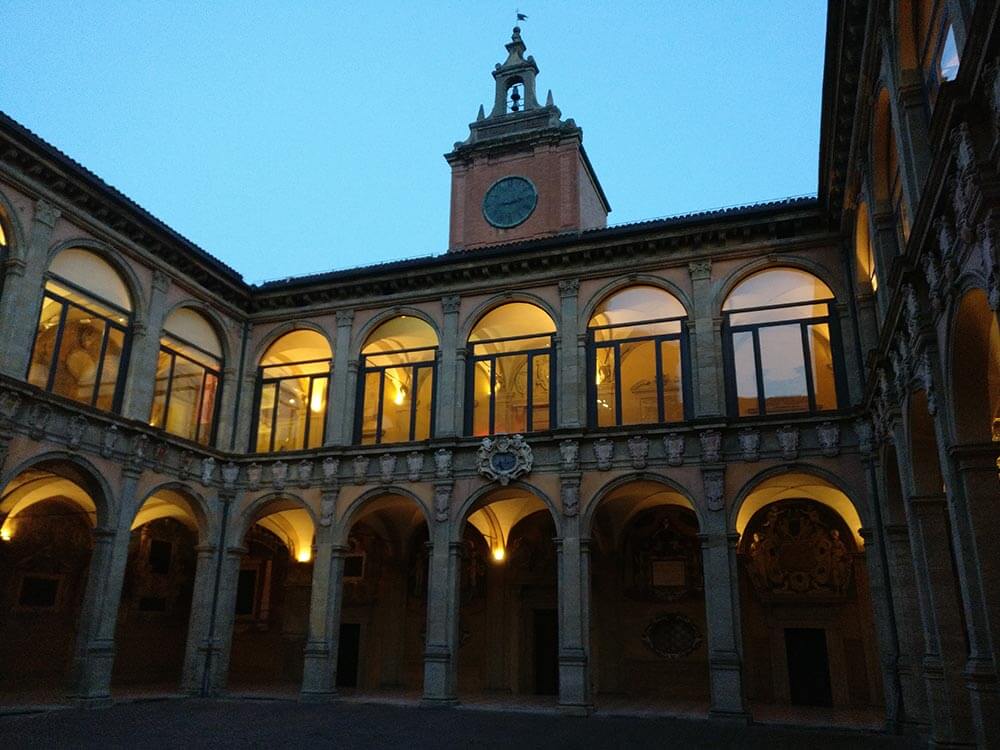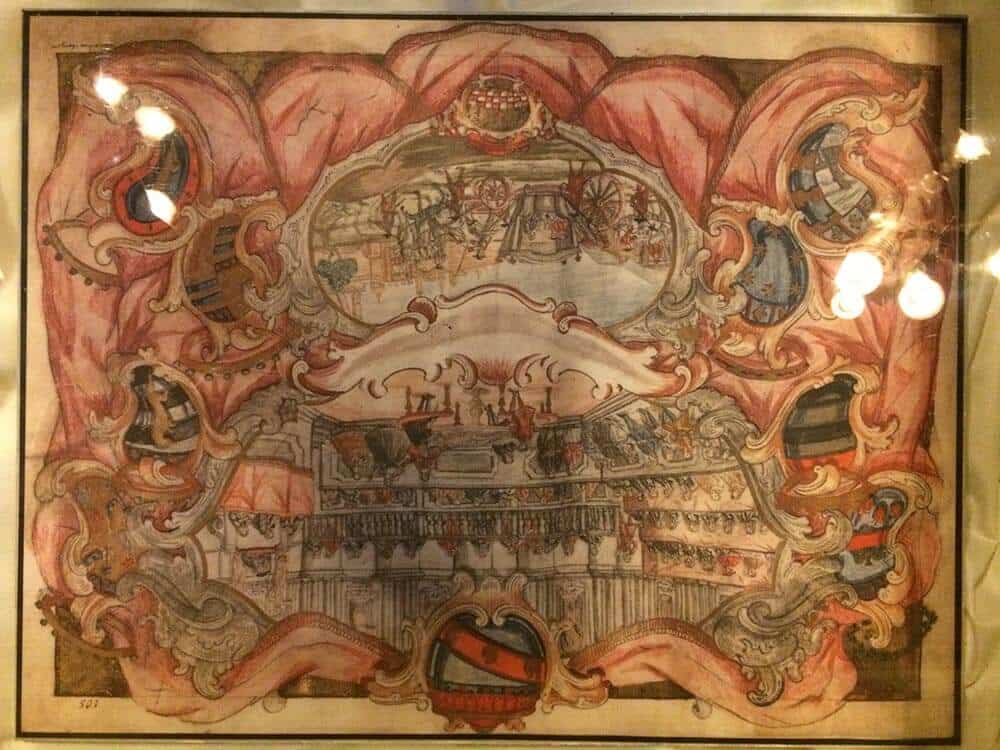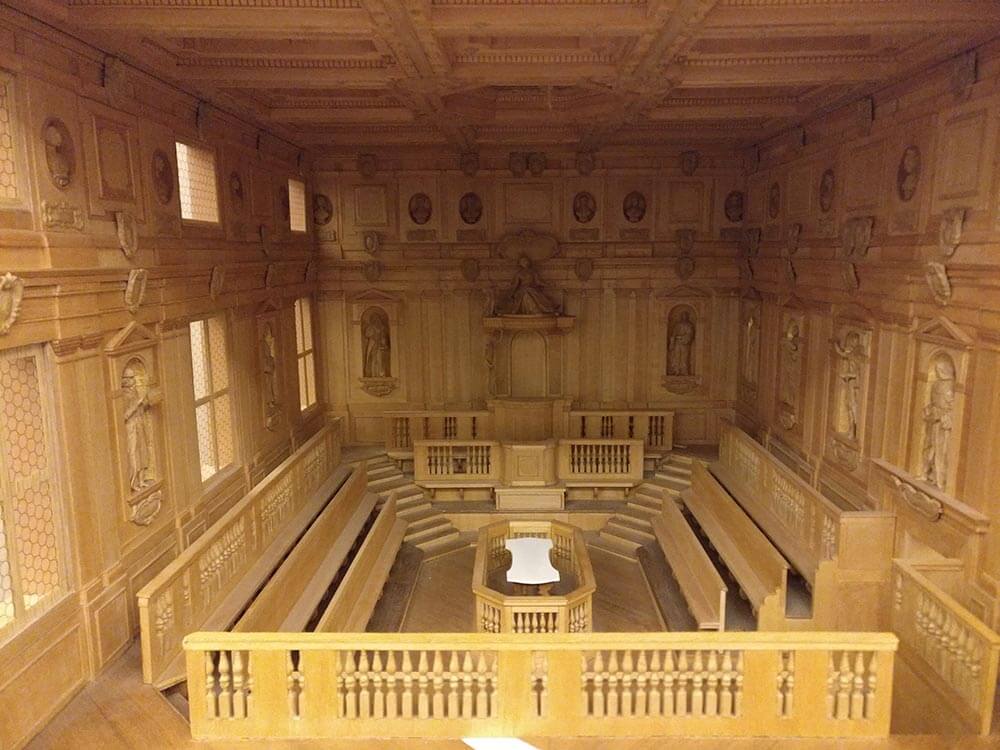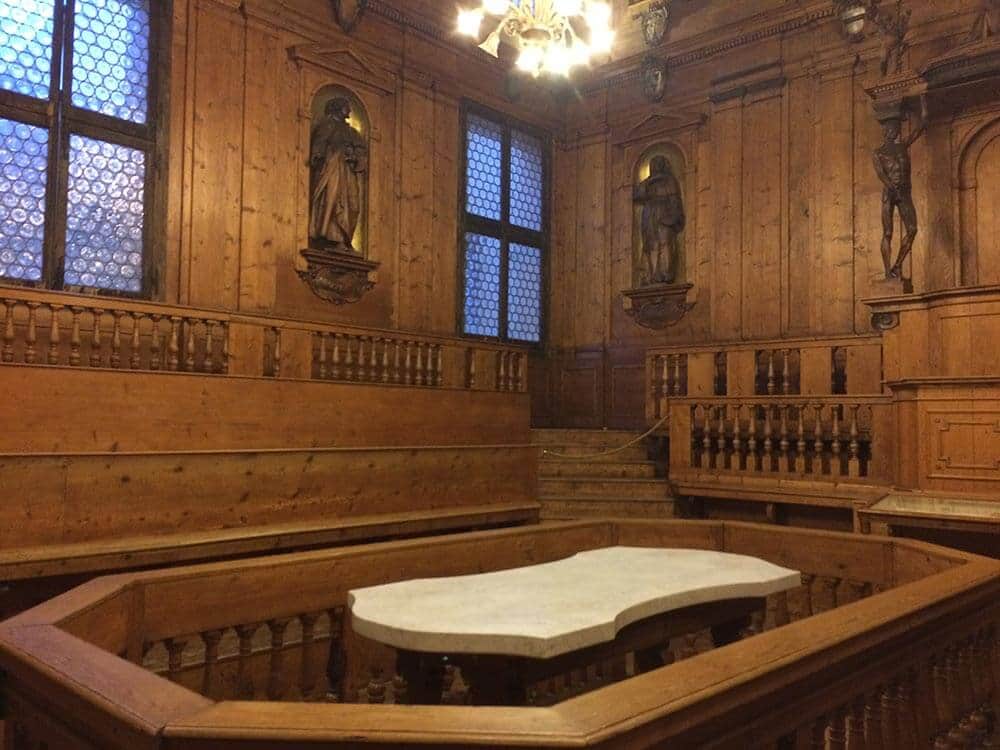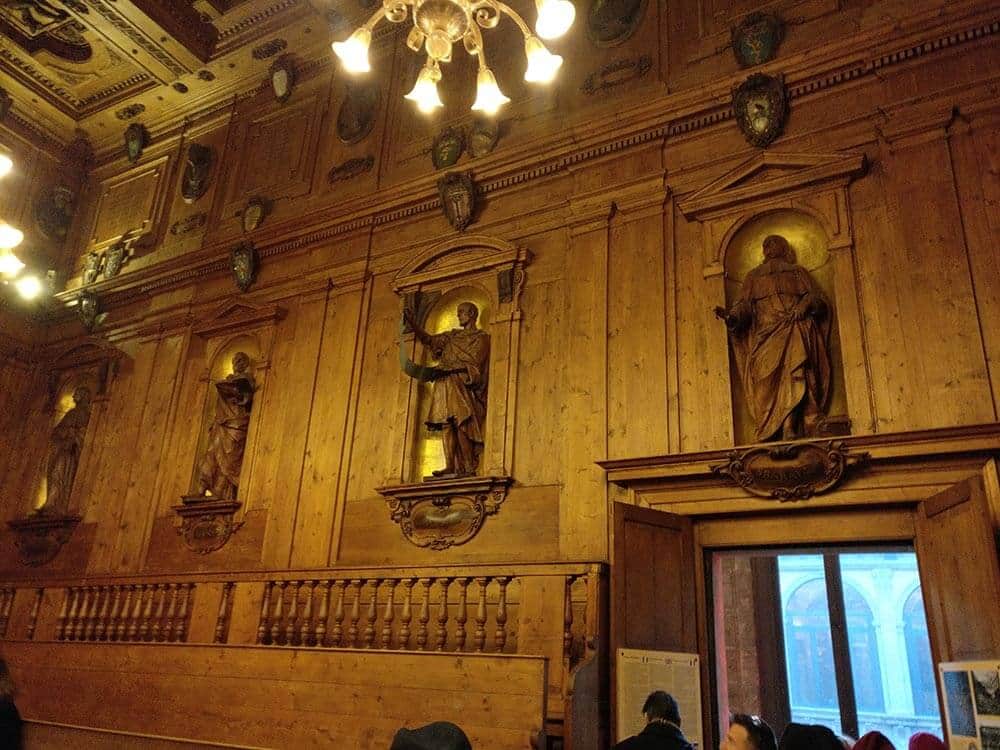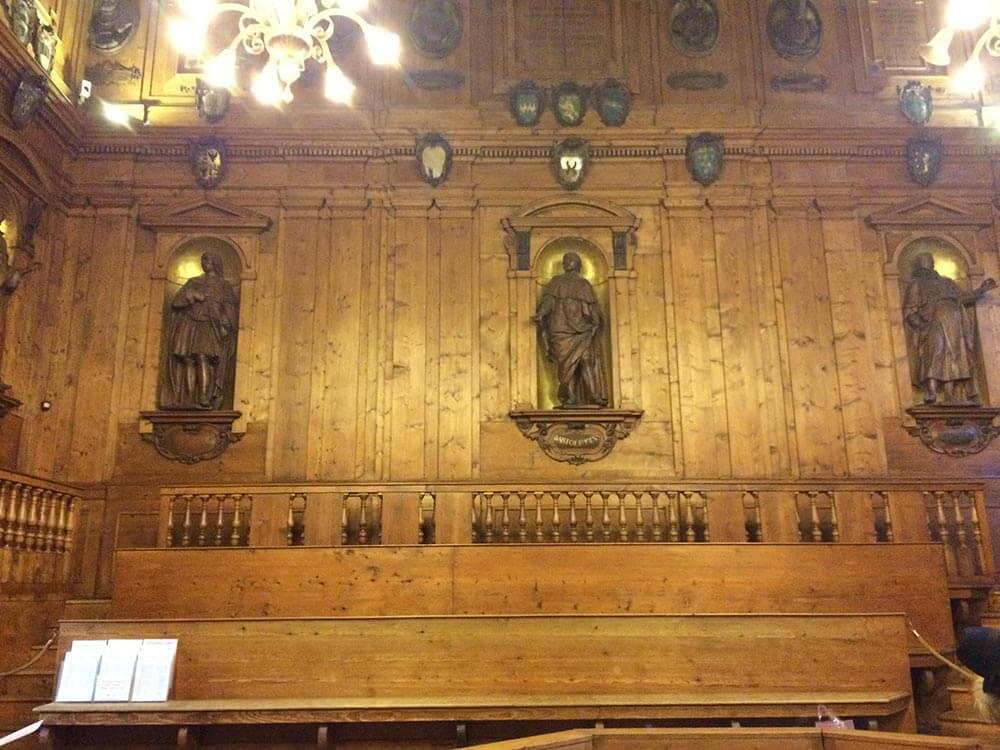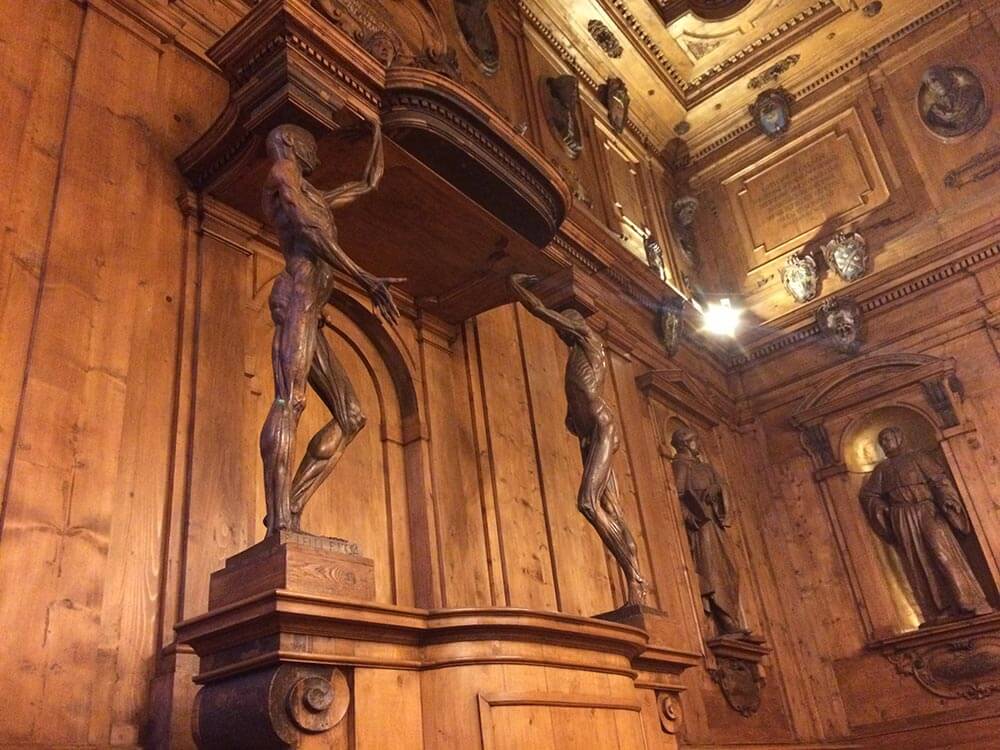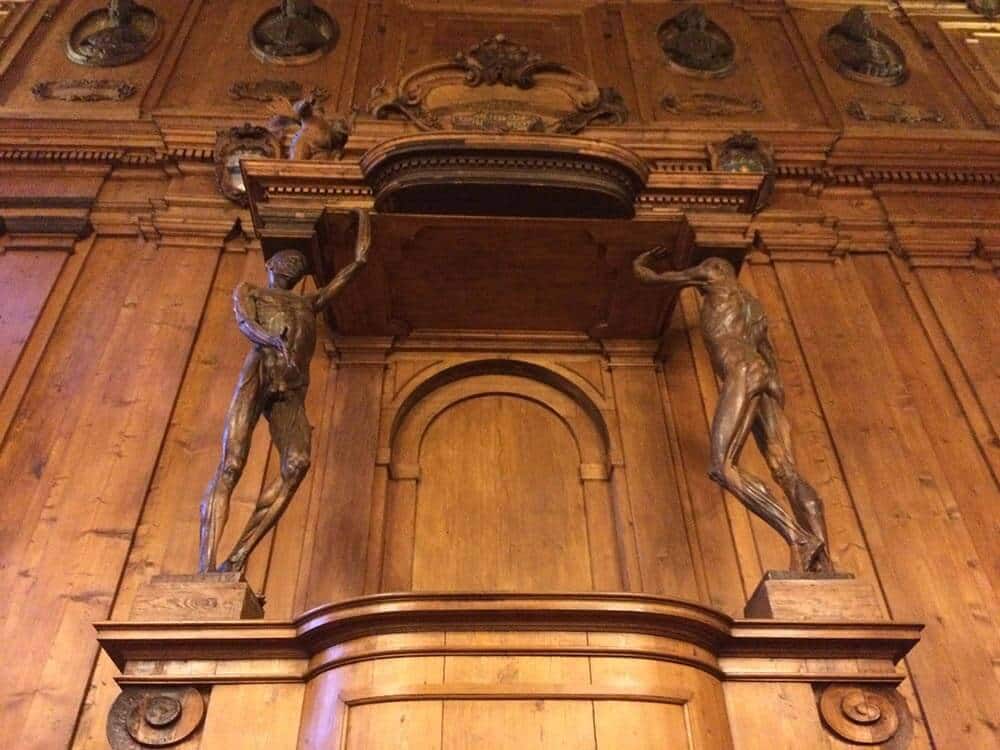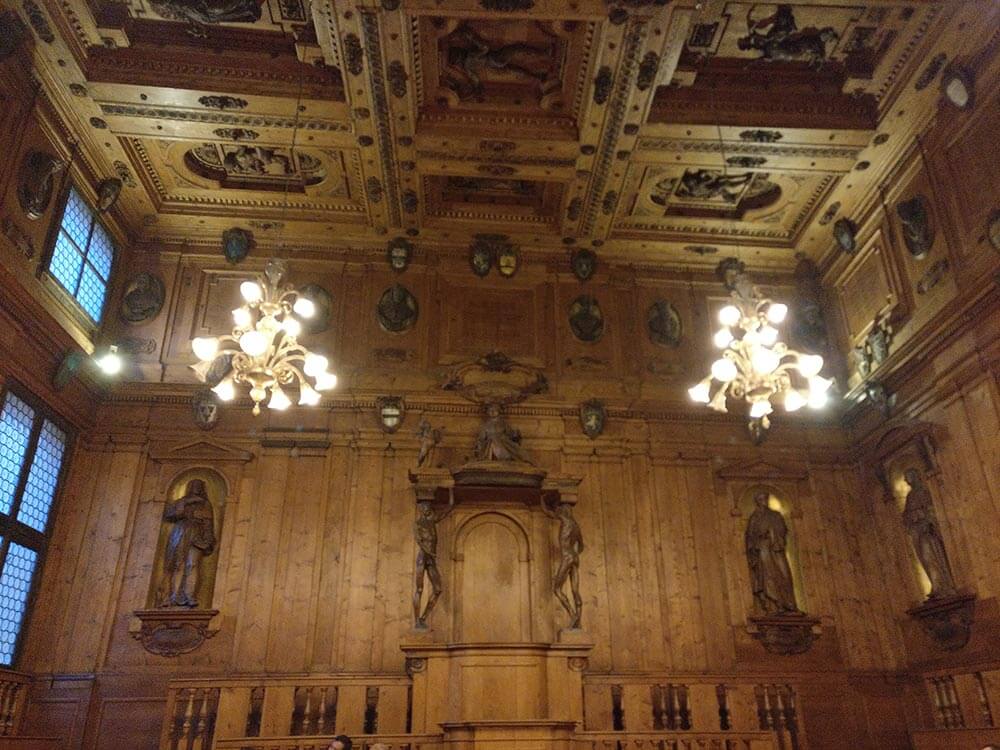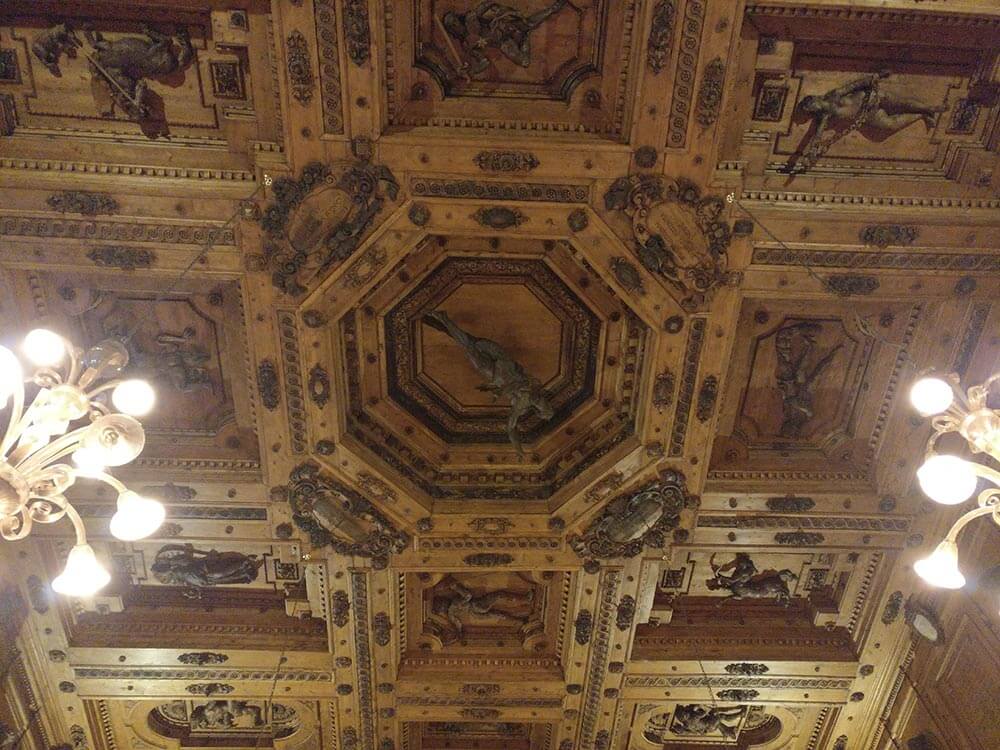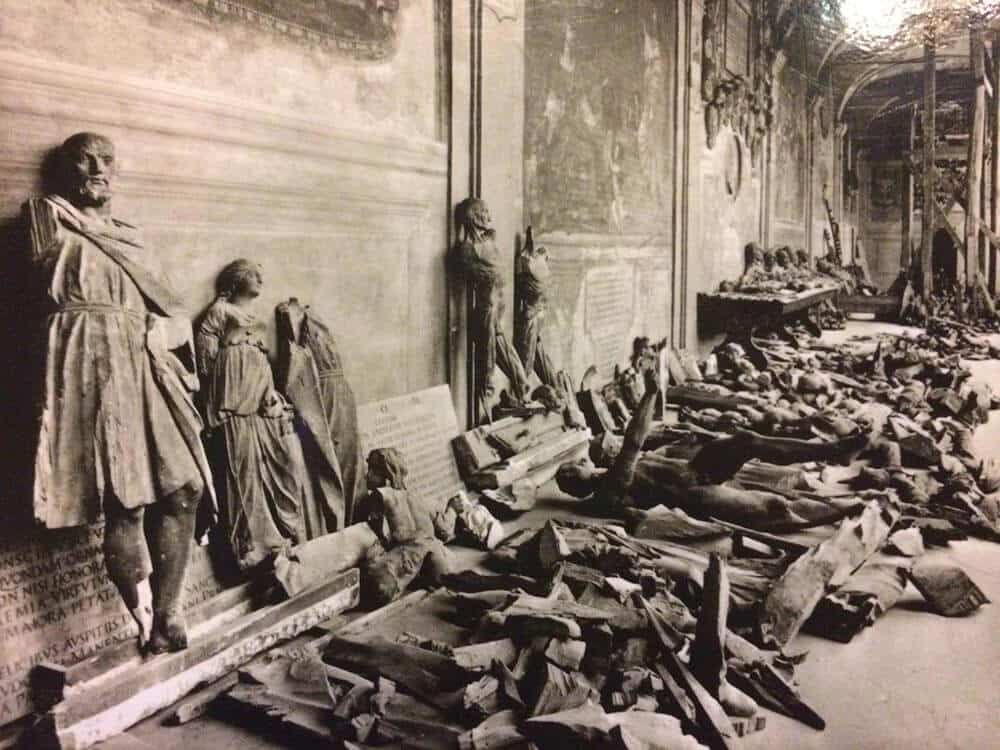The Archiginnasio Palace was built between 1562 and 1563 in order to give the city of Bologna a single headquarters for the university that was dispersed in various places.
Inside there were 10 classrooms and two lecture halls; the building ceased its university function in 1803 and today is home to the Municipal Library which houses 35,000 manuscripts and incunabula.
Climbing the wide staircase that leads to the upper floor you find yourself surrounded by the largest heraldic complex, high walls completely covered with 6000 (originally there were over 7000) student coats of arms and inscriptions in honor of the professors that in the time taught there.
The most extraordinary thing about this beautiful palace is the Anatomical Theater, a room completely covered in wood and decorated with wood statues, designed in 1637 by the Bolognese architect Antonio Paolucci, called Levanti, a pupil of the Carracci.
This place used to host anatomical demonstrations and right in the center is placed a white marble table on which occurred the corpses’ dissection (the autopsy table we see now is a copy: the original one is stored elsewhere since it still shows creepy blood spots and is not considered convenient to be displayed in public).The table was surrounded by wide wood steps arranged in a circle and equipped with parapets. From this location, students could watch Medicine teachers demonstrations.
As well as a practical function the concentric set adopted in this facility had also the function of symbolizing the Universe in which center mankind carries out its activity in scientific research and development.
In all coeval anatomical theaters, we can find ceilings decorated with allegorical or symbolic: skeletons leading in their hand’s flags or signs praising the “memento mori” or “curriculum brevitas” or starry skies with the zodiac images, a symbol of cyclicity and eternity.
Similarly, the ceiling in the Archiginnasio Anatomical Theater the decorations weave a dense network of symbols related to medical astrology and the analogy between microcosm and macrocosm, a typical Renaissance concept.
All around the statues of famous doctors including the two main ones, to the right of the entrance, depicting Hippocrates and Galen, respectively, the most important Greek doctor and the most important Roman physician.
An interesting statue on the opposite wall to the chair depicts a doctor who holds in her hand a nose: it is the Bolognese Gaspare Tagliacozzi, considered the precursor of rhinoplasty, the inventor in the mid ‘500 of a technique to reconstruct noses and ears with flesh removed from the arms.
Above the canopy a seated female figure, the Anatomy allegory, that receives as a gift by a winged cherub, not a flower, but a nice femur.
Complete the sophisticated roundup of quotes an upright canopy by two statues of naked men and individuals of the skin, called “the peeled”, eighteenth-century work of Ercole Lelli.
The sophisticated overview is completed by a pair of statues holding up the canopy, two naked men with no skin, called “the peeled”, gli “spellati”, a work of Ercole Lelli from the 18th century.
The effect of this very serious and ancient place of study is a bit surreal: on one side the warmth effect of wood furnishing makes us feel protected and reassured as in a spacious mountain hut and on the other side the presence of figures who handle long bones and flaunt subcutaneous nudity makes us feel a bit less at ease sitting on large concentric benches.
I’m sorry to say that the dissecting room was severely damaged in the bombing that in January 1944 destroyed this side of the building; what we visit today is a perfect reconstruction dating the period right after the Second World War. Luckily the original wooden sculptures were recovered from the ruins, and replaced in the reconstructed theater.
If you visit Bologna the Erudite, the Fat, the Red a visit to the Anatomical Theater of the Archiginnasio palace is a must, both because of its beauty and to discover the thousand-year university history of this unique city.
Saluti from Betti.
Location on Google Maps:
[socialWarfare]

